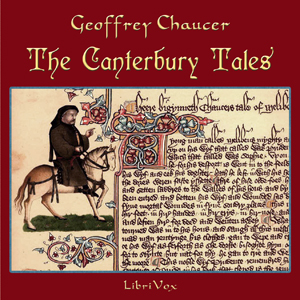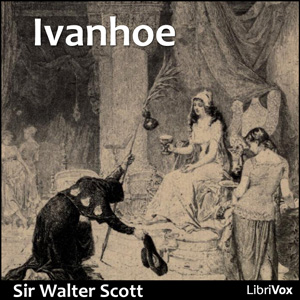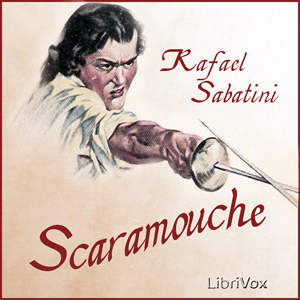World’s Story Volume VII: Germany, the Netherlands and Switzerland
(0 User reviews)
195
1914
English
- Thusnelda in the triumphal procession of Germanicus, by Karl Theodor von Piloty (born at Munich, October 1, 1826. Died there, July 21, 1886), painting frontispiece
- Germany Part I: In pagan times: Historical note
- How the early Germans lived, by Caius Cornelius Tacitus
- An appeal to Caesar (58 B.C.), by T. Rice Holmes
- Herman, who freed the Germans from Rome (9 A.D.), by Kate Freiligrath Kroeker
- Boniface and the oak of Thor (about 723), by the Right Rev. W. Pakenham Walsh
- Germany Part II: Emperors of mediaeval Germany: Historical note
- How Charlemagne overcame the Saxons, by Dr. William Zimmermann
- The Margrave Gero and the Vandals, by Theodor von Heyden (German artist, 1827), painting p. 36
- The election of Frederick Barbarossa (the red-bearded) (1152), by Cyrus Townsend Brady
- Frederick of the Red Beard and the Pope (1177), from the old chronicles
- Frederick Barbarossa at the feet of the Pope, by Albert Maignan (France, 1844-1908), painting p. 48
- Barbarossa, by Friedrich Rückert
- Germany Part III: Stories of the Middle Ages: Historical note
- How Siegfried won a bride for King Gunther, from the Nibelungenlied
- Bishop Hatto and his mouse tower (about 968), by Robert Southey
- The Lorelei, by Heinrich Heine
- The little Faust tower of Munich, by Frantz Trautmann
- Germany Part IV: Life in the fifteenth century: Historical note
- The great Hanseatic League, by Eva March Tappan
- The walled cities of Germany, by Sabine Baring-Gould, with the collaboration of Arthur Gilman
- German life in the fifteenth century, by Johannes Janssen
- The contest of the master-singers, by August Hagen
- John Gutenberg, inventor of printing (middle of the sixteenth century), by Eva March Tappan
- Germany Part V: From the Reformation to the death of Frederick the Great: Historical note
- Martin Luther as a boy (about 1500), by Mrs. Elizabeth R. Charles
- The sacking of Magdeburg (1631), by Johann Christoph Friedrich von Schiller
- The giant regiment of Frederick William I of Prussia (between 1713 and 1740), by Thomas Carlyle
- The childhood of Frederick the Great (about 1720), by Thomas Carlyle
- Frederick the Great and the First Silesian War (1740-1745), by Thomas Babington Macaulay
- The round table of Frederick the Great at Sans Souci, by Adolf Friedrich Erdmann Menzel (Germany, 1815-1905), painting p. 178
- Germany Part VI: German authors and composers: Historical note
- Stories from the eighteenth century, by Johann Wolfgang von Goethe
- Morning prayers in the Bach family, by Toby Edward Rosenthal (American painter, 1848), painting p. 190
- Handel, the master of Oratorio (1685-1759), by L. B. Urbino
- The unwritten overture of Mozart (1756-1791), by Heribert Rau
- A visit to Beethoven (1770-1827), by Richard Wagner
- Germany Part VII: Two wars with France: Historical note
- The oath at the grave of Frederick the Great (1806), by Louisa Mühlbach (Klara M. Mundt)
- Why the philosopher's letter was not mailed (1806), by Louisa Mühlbach (Klara M. Mundt)
- The Queen of Prussia's ride (1806), by A. L. A. Smith
- William of Prussia proclaimed German Emperor at Versailles, by Anton von Werner (Germany, 1843), painting p. 236
- The troubles of a correspondent in the Franco-Prussian War (1870), from "All the Year Round"
- German wounded in the Gallery of Mirrors, Versailles, by Victor Bachereau-Reverchon (French artist, 1842), painting p. 248
- The watch on the Rhine, by Max Schneckenburger
- Germany Part VIII: Modern Germany: Historical note
- Bismarck in the Reichstag and at home (about 1880), by George Makepeace Towle
- Student life at the German universities (about 1900), by Mrs. Alfred Sidgwick
- A day with the German Emperor (1898), by Maurice Leudet
- The German Fatherland, by Ernst Moritz Arndt
- The Netherlands Part I: From the Roman conquest to the Reformation: Historical note
- Besieging a Roman camp (54 B.C.), by T. Rice Holmes
- The rebellion of Civilis (69 A.D.), by Caius Cornelius Tacitus
- How Count William of Holland was made a knight (1247), from the old chronicles
- How Philip van Artevelde was made Governor of Ghent (1386), by Sir John Froissart
- The childhood of Charles V: a reading by Erasmus, by Eduard Jean Conrad Hamman (Belgian painter, 1819), painting p. 302
- The Netherlands Part II: How Holland won her freedom: Historical note
- The ''beggars'' of Holland (1566), by John Lothrop Motley
- The siege of Leyden (1574), by John Lothrop Motley
- The assassination of William the Silent (1584), by John Lothrop Motley
- Sir Philip Sidney and the glass of water (1586), by John Lothrop Motley
- How a turf-boat captured the city of Breda (1590), by G. T. Hoare
- The Netherlands Part III: The period of commercial greatness: Historical note
- How a mud-hole became a garden, by William Elliot Griffis
- When the pilgrim fathers went to Holland (1608), by William Bradford
- The surrender of Breda, by Diego Rodriguez de Silva Velasquez (Spanish painter, 1599-1660), painting p. 368
- The escape of Hugo de Groot (1621), by Frederick Spencer Bird
- The return of Spinoza (about 1653), by Israel Zangwill
- The rival tulip-growers (1672), by Alexandre Dumas
- When William III of England came home to his fatherland (1691), by Thomas Babington Macaulay
- The Netherlands Part IV: Little stories of Netherland artists: Historical note
- King Philip presenting Rubens to Velasquez, by Leon y Escosura (Spanish artist, 1834-1901), painting p. 406
- Peter Paul Rubens (1577-1640), by Theodore Child
- Anton Vandyck (1599-1641), by Clara Erskine Clement
- Rembrandt's ''The Night Watch'', by Théophile Gautier
- The Night Watch, by Rembrandt van Ryn (born at Leyden, 1607. Died in 1669), painting p. 414
- Rembrandt in his studio, by Jean Léon Gérôme (French artist, 1824-1904), painting p. 416
- The Netherlands Part V: The Netherlands in recent years: Historical note
- The American Revolution in Holland, by Hendrik Willem van Loon
- Contrary land, by Mary Mapes Dodge
- The festival of Saint Nicholas, by Mary Mapes Dodge
- In and out of a cab in Amsterdam, by F. Hopkinson Smith
- The beloved Queen Wilhelmina (born in 1880), by William Elliot Griffis
- Switzerland Part I: In earliest times: Historical note
- The siege of the Lake-Dwellers, by Sir Arthur Helps
- The flight of the Helvetians (58 B.C.), by Eva March Tappan
- The Devil's Bridge over the Reuss, by H. A. Guerber
- Switzerland Part II: How the Swiss gained their freedom: Historical note
- The meeting at the Rütli (1307), by Heinrich Zschokke
- The shot of William Tell (1307), by Johann Christoph Friedrich von Schiller
- Tell's escape (1307), by Johann Christoph Friedrich von Schiller
- Song of the Battle of Morgarten (1315), by Felicia Dorothea Hemans
- The death of Winkelried (1386), by Walter Thornbury
- Switzerland Part III: Stories from Swiss history: Historical note
- The Baron of Raron and the ''Mazze'' (fifteenth century), by J. Wilson
- Peace or war ? (1474), by Sir Walter Scott
- How the Swiss met Charles the Bold of Burgundy (1476) by Heinrich Zschokke
- The milk porridge incident: a story of the Reformation, by Clarence Rook
- The prison of Chillon, by Jacob Abbott
- The lion at Luzern, by Boyd Winchester
- Switzerland Part IV: Stories of Alpine adventure: Historical note
- Swept down by an avalanche, by Heinrich Zschokke
- The slide of Alpnach, by L. A. Gilbert
- The first ascent of the Matterhorn, by Edward Whymper
- Tobogganing on a glacier, by John Addington Symonds
- Switzerland Part V: Life in the mountains: Historical note
- Our borrowed scientists, by W. D. McCrackan
- The tiny farms of Switzerland, by Boyd Winchester
- How Switzerland defends herself, by Clarence Rook
- How the Swiss built the greatest tunnel in the world, by Francis Fox
This is the seventh volume of the 15-volume series of The World’s Story: a history of the World in story, song and art, edited by Eva March Tappan. Each book is a compilation of selections from prose literature, poetry and pictures and offers a comprehensive presentation of the world's history, art and culture, from the early times till the beginning of the 20th century. Topics in Part VII include the stories from the Nibelungen saga of the Germans, masterpieces of the Dutch Painters and the famous apple-shooting episode from Schiller's drama William Tell. - Summary by Sonia
Cast list for The shot of William Tell:
Walter: Stoofy / William Tell: ToddHW / Friesshard: Foon / Leuth: Jim Locke / Sacristan: Aaron White / Rosselmann: TJ Burns / Furst: alanmapstone / Stauffacher: Nemo / Melchthal: Eva Davis / Peasants: Sandra Schmit / Women: Monika M.C. / Harras: Frédéric Surget / Gessler: Tomas Peter / Bertha: Devorah Allen / Rudenz: Philip Watson / Narrator: Sonia
Cast list for Tell's escape:
William Tell: Jim Locke / Fisherman: Tomas Peter / Narrator: Sonia
Cast list for The shot of William Tell:
Walter: Stoofy / William Tell: ToddHW / Friesshard: Foon / Leuth: Jim Locke / Sacristan: Aaron White / Rosselmann: TJ Burns / Furst: alanmapstone / Stauffacher: Nemo / Melchthal: Eva Davis / Peasants: Sandra Schmit / Women: Monika M.C. / Harras: Frédéric Surget / Gessler: Tomas Peter / Bertha: Devorah Allen / Rudenz: Philip Watson / Narrator: Sonia
Cast list for Tell's escape:
William Tell: Jim Locke / Fisherman: Tomas Peter / Narrator: Sonia
There are no reviews for this eBook.
There are no comments for this eBook.
You must log in to post a comment.
Log in











